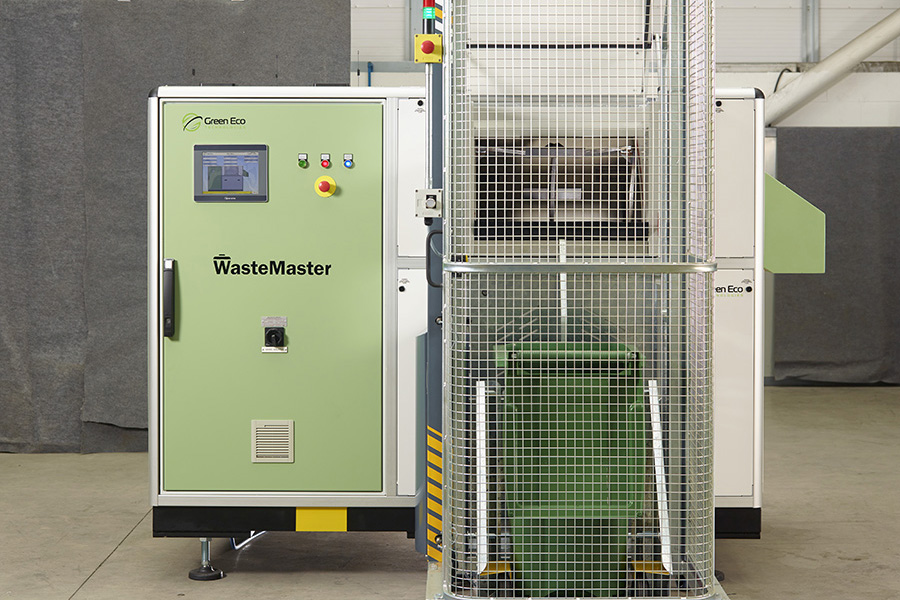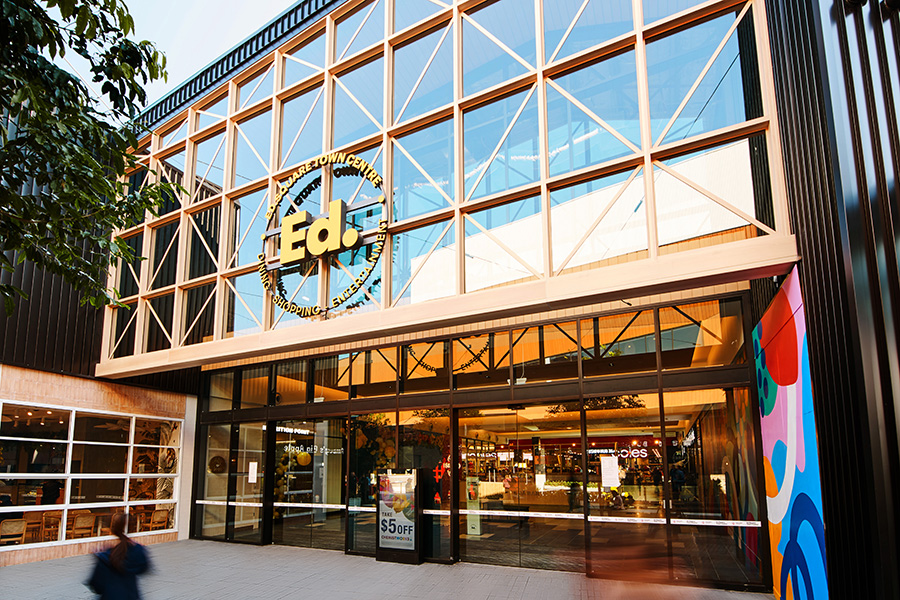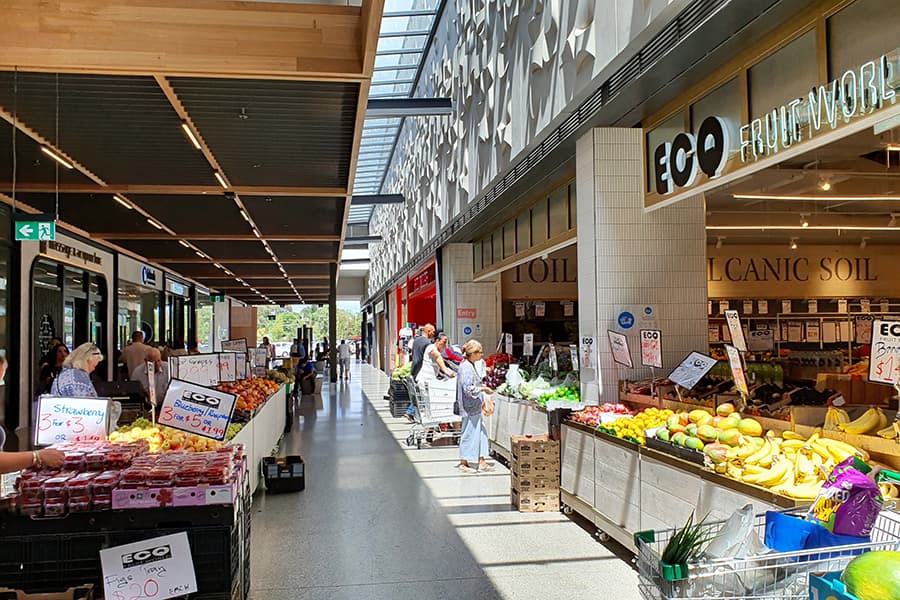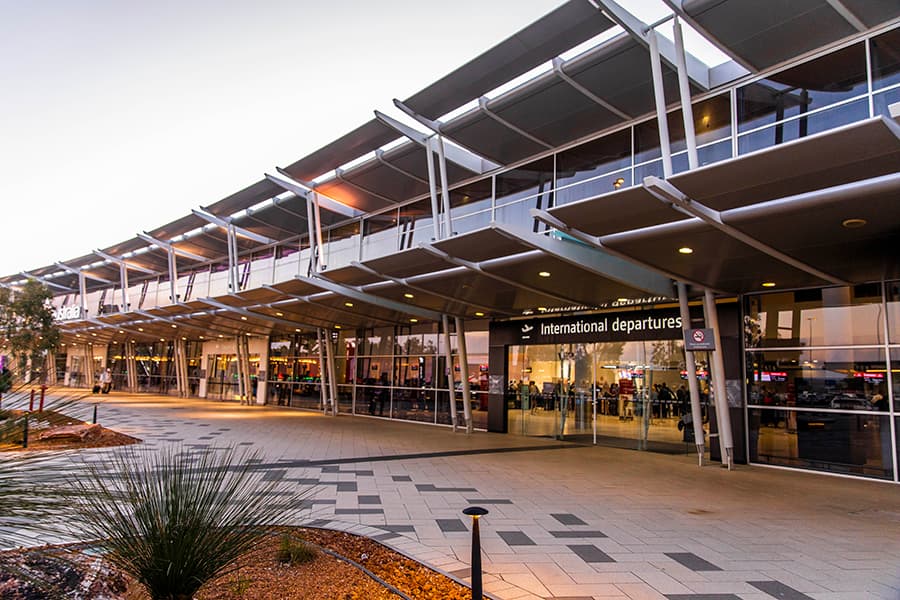Food and beverage precincts are coming back to life. But what about the food waste they produce? And what if it’s not really ‘waste’ at all? Rohan Dinn from Green Eco Technologies discusses their WasteMaster innovation and shares a case study on the world’s most sustainable retail development.
The trend among leading shopping centres for an elevated food and beverage offer, with more choices, healthier options and better dining experiences, was becoming entrenched by the time COVID-19 struck. Now, with lockdowns hopefully a thing of the past, those centres will be looking to maximise the investment they made.
People are out and about more and some of those places are roaring back to life. At the same time, consumers are exercising discretion as to where they choose to spend their time and money. Corporate, social and environmental responsibility are being factored into these decisions.
More and more, strong green credentials matter. But food waste is an area flying somewhat under the radar. Based on growing consumer preferences for environmentally conscious solutions, it won’t for much longer. This is where technology comes in.
Innovative technology which blasts the cell walls of food waste with charged oxygen molecules is flipping the discussion.
From large-scale facilities like hospitals to residential developments, mining facilities, schools and universities, numerous environmental (and other) benefits have emerged through the re-purposing of food waste into reusable material using cell-blasting technology.
Carbon footprints and greenhouse gas emissions are reduced. Waste management’s bottom lines are too. More ambitious sustainability targets are within reach and the opportunity to convert waste into clean energy supports the renewable economy.
For shopping centres, the opportunity to generate similar benefits exists on a broader scale, and there are added benefits in terms of consumer appeal to consider. Especially as consumers return in greater numbers.

The WasteMaster innovation uses unique technology to convert food waste into a virtually odour-free, much-reduced quantity of reusable residual material
Processing food waste with technology
According to the Australian Department of Agriculture, 7.6 million tonnes of food is wasted each year. Most of it is processed in ways which are not environmentally friendly. Turning this waste into a resource unlocks significant opportunities.
The WasteMaster innovation uses unique technology to convert food waste, without bacteria, other additives, or water, into a virtually odour-free, much-reduced quantity of reusable residual material. It blasts the cell walls of food waste with charged oxygen molecules which accelerates decomposition.
The moisture in the waste is evaporated and vented into the air as humid, odour-free vapour. What remains is a pathogen-free, high-calorific value, nutrient-rich residue, which is ideal for a range of beneficial uses.
At the end of the process – typically less than 24 hours, which is considerably faster than composting – the weight of the organic waste has been reduced by up to 80%. For every 500 kilograms loaded into the system, it outputs around 100 kilograms of compost-like residual material, which will not attract insects or vermin in its dry state. Material ready to be re-purposed on-site or off-site. In this scenario, the food waste produced is not actually waste at all.
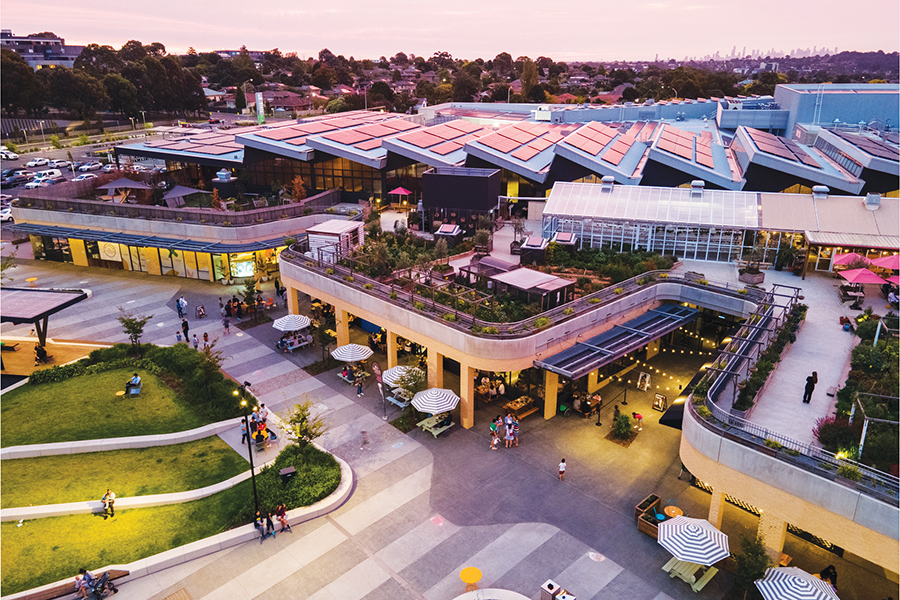
Burwood Brickworks Shopping Centre by Frasers Property Australia
Case study: Burwood Brickworks
Burwood Brickworks Shopping Centre by Frasers Property Australia is recognised as the world’s most sustainable retail development, having achieved Living Building Challenge™ Petal certification. Its food waste approach is an important contributor to its world-leading sustainability position.
The development includes a WasteMaster food waste conversion system, which was commissioned on-site in January 2020. Since then, 83 tonnes of greenhouse gas emissions – and counting – have been saved. More than 66,000 kilograms of food waste have been diverted from landfills. Plus, there are significant renewable energy outcomes.
In Melbourne, WasteMaster sends all food waste residue produced by its commercial partners to Yarra Valley Water. At its anaerobic digestion (“waste to energy”) facility in Wollert, Yarra Valley Water feeds the commercial food waste into a sealed tank called a ‘digester’ in which bacteria causes the waste to break down. As it does so, it generates biogas, which is mostly methane – the same gas used in the natural gas network.
The biogas is then cleaned to remove odours and impurities before being sent as fuel to a generator which produces electricity to power the plant. The excess is exported to the electricity grid. Again, the term ‘waste’ no longer seems appropriate.
From Burwood Brickworks Shopping Centre alone, about 16,000 tonnes of re-purposed residue have been sent to Yarra Valley Water. This has created enough green electricity to power 2,500+ homes for a day.
Based on the success of the initiative, Frasers Property introduced the technology to two other retail centres.
- Ed.Square Town Centre
- Eastern Creek Quarter
At Ed.Square Town Centre and Eastern Creek Quarter, both in Sydney, the cell-blasting technology has saved more than 15 tonnes of greenhouse gas emissions combined since May 2021.
More to the point for consumers is that they know, by dining in these spaces, that the centre is elevating its recycling efforts, just like they’re doing at home through composting and separating waste streams.
And those environmentally-conscious consumers are more likely to return.


